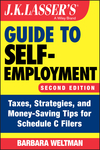What to Do with Your Tax Refund?
Now that tax filing season is over, millions of taxpayers are eagerly awaiting their tax refunds. The IRS says the average refund this year is about $2,700. Some measures you take now with your tax refund can produce tax savings for you in the future.
Fund Retirement Accounts
Use your tax refund to add to an IRA. The contribution limit for 2009 for a traditional and Roth IRA is $5,000 ($6,000 for those who will be at least 50 years old on December 31, 2009). Adding to a traditional IRA gives you a tax deduction for 2009; adding to a Roth IRA, which is not tax deductible, lets you build up tax-free income for your retirement.
Determine eligibility to contribute to these accounts. You must have earned income. And your adjusted gross income cannot exceed set limits for adding to a Roth IRA or to a traditional IRA if you’re an active participant in a qualified plan (such as a company 401(k) plan).
Fund Education Savings
Use your tax refund to put money into a 529 plan for yourself, your child, or your grandchild. While contributions are not tax deductible, earnings on the contributions build up on a tax-deferred basis. Withdrawals to pay for qualified higher education costs are not taxed. In 2009 and 2010, computer-related costs, including Internet access, are treated as a qualified expense.
You can also add your refund, up to $2,000, to a Coverdell education savings account for a child under the age of 17. However, your modified adjusted gross income (MAGI) cannot exceed set limits.
Make Energy-Saving Improvements
Adding insulation, a new energy-efficient furnace, storm windows, or solar panels to a principal residence may entitle you to a tax credit. Applying your tax refund to this type of expenditure will produce multiple benefits-tax savings and savings on energy costs.
For 2009, the credit for certain energy improvements is 30% of the cost. There is a $1,500 cap on the aggregate credit that can be claimed in 2009 and 2010. The credit for alternative energy improvements to a home, including wind property and geothermal heat pumps, is also 30% of the cost; there is no dollar cap.
Improve Your Financial Picture
Use your tax refund to pay off high credit card debt. Interest on this debt usually is not deductible. However, don’t be too anxious apply your refund to paying off student loan debt. This borrowing may bear very low interest rates, and you can deduct interest on these loans up to $2,500 annually as long as your MAGI does not exceed set limits.
Or use the refund to save for a down payment on a home. Today’s low interest rates and depressed property values, combined with the first-time homebuyer credit, make buying a home an excellent move.
Or use the refund to amass a personal emergency fund to carry you through at least 6 months if financial disaster strikes.
Other Thoughts
Think that getting a big refund is a good thing? Think again. You’ve effectively made an interest-free loan to the government. Better strategy: Revise your withholding and estimated taxes for 2009 to reduce tax payments to better approximate your 2009 tax bill. This gives you the use of your money throughout the year.
Self-employed person
An individual who operates a business or profession as a proprietor or independent contractor and reports self-employment income on Schedule C.



